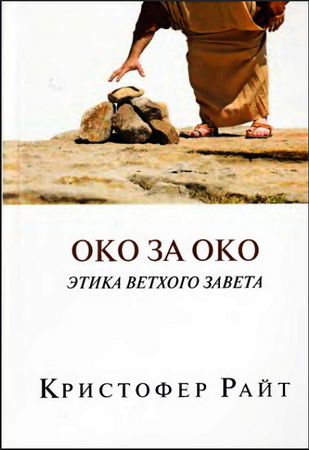
Leeming - Encyclopedia of Psychology and Religion
David A. Leeming - Encyclopedia of Psychology and Religion
New York: Springer Science+Business Media, 2014. – 2010 p.
ISBN 978-1461460855
The first edition of the Encyclopedia of Psychology and Religion was published in 2010 by Springer under the joint editorship of David Leeming, Kathryn Madden, and Stanton Marlan. Since that time, the encyclopedia has been a “living” online project leading to the present second edition under the editorship of David Leeming. Dr. Leeming has taught courses in myth, religion, and literature for many years and has published several books on these subjects, including the Oxford Companion to World Mythology, and until recently was Editor-in-Chief of Springer’s award-winning Journal of Religion and Health. He is Emeritus President of the Blanton-Peale Graduate Institute, the original sponsor of the encyclopedia.
The Encyclopedia of Psychology and Religion grows out of the developing awareness of the need to reintegrate the studies of the mind with those of the spirit. By bringing together the disciplines of psychology and religion, it unites the two areas of thought concerned with the behavior and motivations of human beings and provides a crucial new resource for the collaboration and mutual illumination of these two fields. For those in the study of religion, it offers new tools for understanding the images, structures, symbols, and rhythms that constitute the vocabulary of religious experience. For those in the field of psychology it reveals deep patterns of meaning and practice that inform human culture and the personal identity of millions.
The Encyclopedia of Psychology and Religion serves as a valuable and accessible reference work in both electronic and print versions for academic libraries and their patrons and will be of particular use to the growing community of researchers, academics, teachers, clergy, therapists, counselors, and other professionals who are involved in the developing reintegration of the fields of religion and psychology.
* * *
Ahimsa
Trish O’Sullivan12
(12)
Kwan Um School of Zen, Private Practice Psychotherapy, New York, NY 10023, USA
Trish O’Sullivan
Email: [email protected]
Ahimsa is a Sanskrit term meaning nonharming. It is the supreme virtue in the three great religions of India – Hinduism, Buddhism, and Jainism. It is the first Yama or discipline in Yoga, the first precept in Buddhism, and the first great vow in the Jain moral code. If this discipline or vow is kept than the others will automatically be attained. For example, the Buddhist precepts of truthfulness, non-stealing, control of sexual activity, and avoidance of intoxicating substances are forms of nonharm of both self and other. This nonharming ethic is said to benefit others not only through their ensured personal safety but also by the creation of a peaceful atmosphere wherein others are moved to give up their own hostility. Ashoka (268–233 BCE) was an Indian emperor that used rapacious violence to conquer and enforce his rule killing thousands. He converted to Buddhism and adopted the practice of Ahimsa. The peaceful change that followed forever linked his name with Ahimsa.
The fulfillment of ethical demands removes existing karmic impurities that create suffering and prevents the accumulation of new impurities. Just as nonharming is the root virtue leading to freedom from suffering, violence is the root cause of all suffering. Practitioners are expected to consciously minimize violence as much as is practicable so as to get rid of the violent attitudes of mind which are not suitable for meditation and will make bad karma.
While all three traditions focus on nonharming in daily life, the Jains go to relatively extreme lengths to avoid harming any creature. Some sweep the ground as they walk so as to avoid stepping on any insects and/or wear facemasks to prevent small insects from injury while breathing. The widespread custom of vegetarianism in India is related to the practice of Ahimsa.
The Indian Mahatma Gandhi utilized Ahimsa as a political tool, through which the Indian Colony achieved freedom from Britain. Other freedom fighters such as Martin Luther King Jr. in the USA successfully applied these principles in the African American struggle for civil rights. While Gandhi was certainly a role model for MLK, there is a pacifist tradition within Christianity also. Christian peace churches such as the Religious Society of Friends or Quakers closely adhere to Jesus’s teaching of nonviolence.
The animal rights and environmental movements are modern examples of a growing nonharming consciousness with a positive regard toward life including both individual life forms and the natural world as a whole.
Ahimsa and Psychology
All three traditions teach that nonharming must be practiced in thought, word, and deed. Nonviolent communication involves speaking truthfully with regard for the other person and listening deeply with compassion.
Thich Nhat Hanh, the Vietnamese Buddhist Master, teaches that psychological violence against the self occurs when feelings are held back and pain ignored. Nonviolence involves being present and recognizing one’s own pain or despair; otherwise, pain builds and can push one to become caught in one’s views or to lash out in anger.
Psychotherapy involves the examination and reduction of violent and other self-harming thoughts and deeds. It involves the generation of compassion toward others who suffer or who have harmed one through the realization that all harm comes from others’ pain.
The conscious therapist is the embodiment of nonviolence by maintaining a position of presence, listening and unconditional positive regard for the patient. It is this therapeutic stance that allows for healing to progress, eventually leading to a lessening of harming activities either internal or external in the patient’s life.
See Also
Buddhism
Hinduism
Psychotherapy
Bibliography
- Bhaskarananda, S. (2002). The essentials of Hinduism: A comprehensive overview of the world’s oldest religion. Seattle: Viveka Press.
- Chapple, C. K. (2000). Life force in Jainism and yoga. In J. Runzo & N. Martin (Eds.), The meaning of life in the world religions (Vol. 1). Oxford: Oneworld Publications.
- Conze, E. (1973). Buddhist thought in India. Ann Arbor: University of Michigan Press.
- Feuerstein, G. (2007). Yoga morality: Ancient teachings at a time of global crisis. Prescott: Holm Press.
- Fuerstein, G. (2001). The yoga tradition: Its history, literature, philosophy and practice. Prescott: Holm Press.
- Ingram, C. (Ed.). (1990). In the footsteps of Gandhi: Conversations with spiritual social activists. Berkeley: Parallax Press.
- Kapleau, P. (1981). To cherish all life: A Buddhist case for becoming vegetarian. Rochester: The Zen Center.





Комментарии
Пока нет комментариев. Будьте первым!